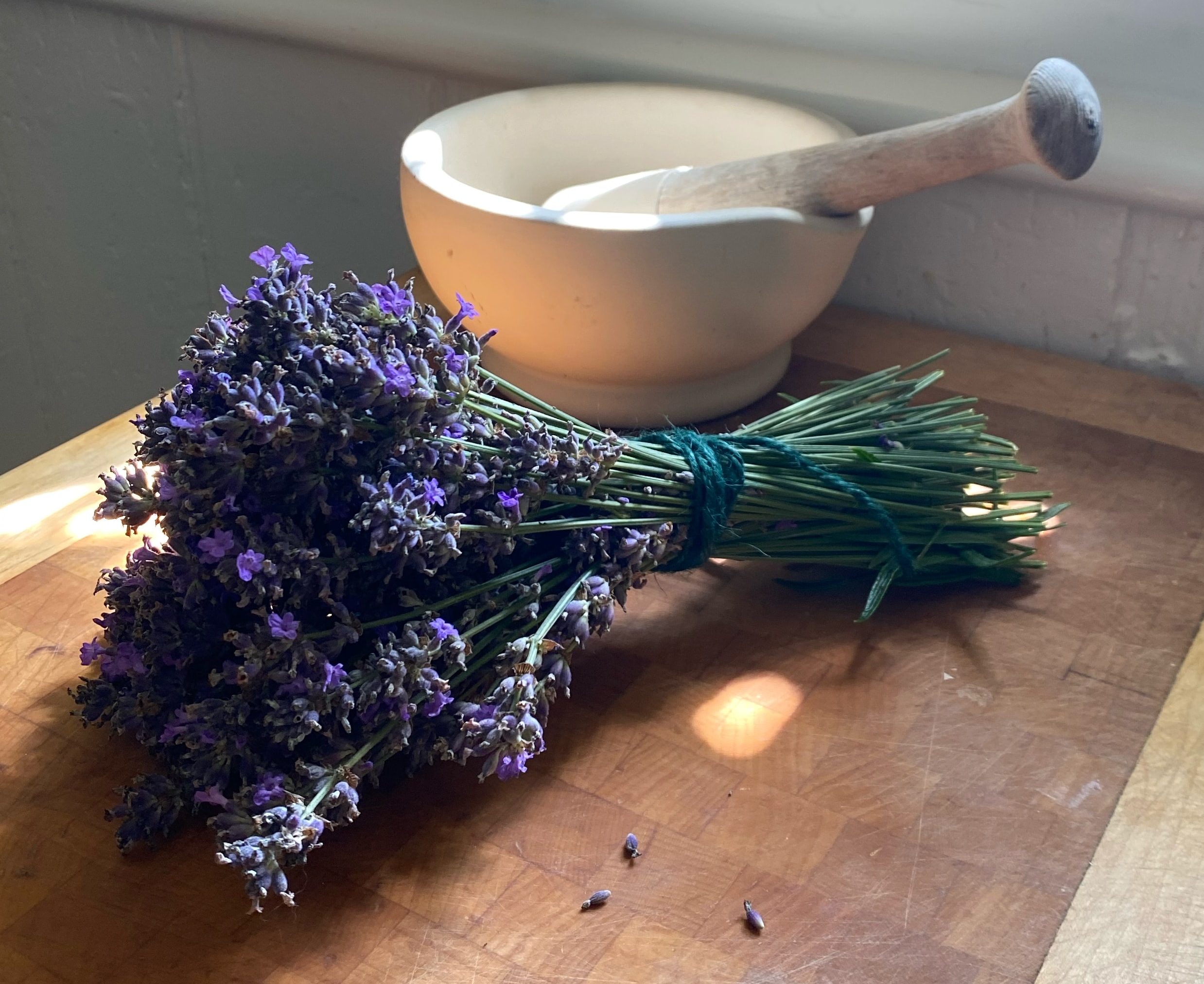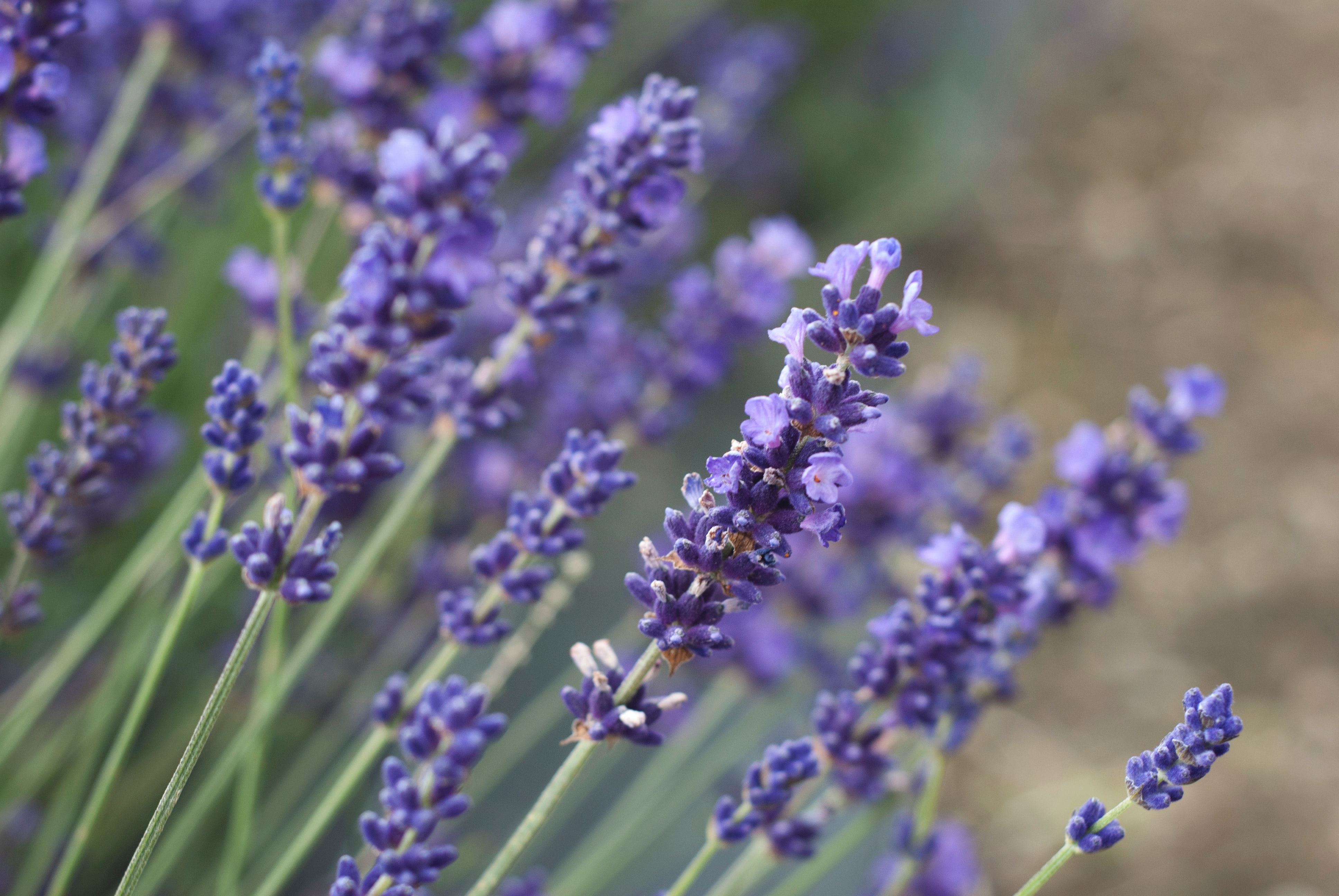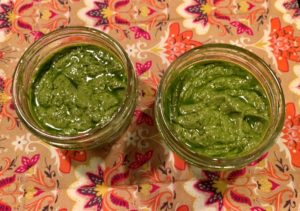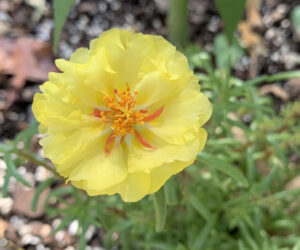Lavender is a perennial herb with gray-green foliage and fragrant flowers that range from blue-purple to dark purple. It is a member of the mint family and is native to the Mediterranean. It thrives in sunny, dry conditions, although it will grow in other environments. Lavandula, the herb’s official Latin name, attracts bees, butterflies, and other pollinators. It is also known for repelling deer, rabbits, and other pests because of its fragrance.
Not only is lavender aromatic and beautiful to look at, but the flowers are edible, and they make a lovely addition to soups, salads, sauces, marinades, desserts, and teas. Lavender also has medicinal benefits, which includes being a natural antiseptic. Its essential oil is said to be good for insect bites, cuts, and general skin irritations, as well as for stress relief, headaches, and a host of other uses. Dried lavender is well-suited for potpourri and sachets.
This article contains affiliate links. If you make a purchase using one of these links, I will receive a very small commission at no additional cost to you, and it will help me maintain this website. Rest assured, I only recommend products I actually like!
Sun, Water, Soil, and Fertilizer
Lavender requires at least six, and preferably eight, hours of full sunlight. If you live in a very hot climate, it may be able to tolerate some late afternoon shade, but it will grow best in full sun.
Keep young lavender plants well-watered. Like rosemary, however, once they are established, the plants will be relatively drought resistant. Wait to water until the top inch or two of soil is dry to the touch. It needs well-draining soil, which is one advantage of growing it in containers. Or, if growing in beds, you can improve drainage by planting it at the top of a sloped area or on a slight mound. Allow for plenty of air circulation between plants as humidity can be a problem because lavender is native to arid climates.
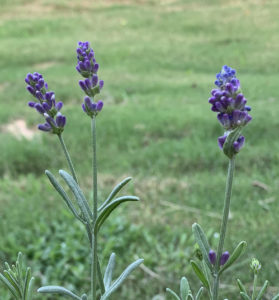
Soil pH can affect the concentration of lavender’s essential oil, as well as the flowers’ fragrance. With that in mind, lavender prefers a soil pH of about 6.7 to 7.3. You can test soil pH of your garden by using this meter or this test kit. If the pH needs adjusting you can raise or lower by adding certain amendments.
If planting in healthy soil, you should not need to fertilizer lavender. In fact, too much fertilizer, especially one high in nitrogen, can result in plant growth but fewer flowers. However, if planted in poor soil or in containers (which tend to lose nutrients quicker than in-ground plants), you may want to fertilize on occasion.
Seed, Cuttings, or Plant Starts?
This lovely Mediterranean herb has a bit of a reputation for being difficult to grow from seeds and cuttings. Therefore, many gardeners choose a plant start from their local nursery or big box store. If this is your preference, be sure to choose a healthy plant that has no obvious signs of pests or diseases. Select a place in a garden bed that meets the criteria described above.
If planting in a container, choose one that is about 10 to 12 inches (25 to 30 cm) in diameter. Lavender tends to like its roots to be somewhat crowded, but small plants should be given space to grow because the soil in small containers (like the ones plant starts come in) can become dry and harden quickly, thus potentially damaging the roots. Make sure the container has adequate drainage holes and place it in a location that gets at least six to eight hours of full sunlight. It is possible that you will have to repot at some time in the future. If so, it is best to move it to a larger pot in the spring before temperatures heat up.
It may be easier to grow lavender from a plant start, but it will cost more, especially if you want to grow more than one plant. Instead, lavender can be successfully grown from seed, cuttings, or by self-seeding, despite its reputation. This article goes into specific instructions for each method. Learn which method is best for you and your garden.
How to Prune Lavender
Pruning your plants once or twice a year will encourage new growth and keep the plant from growing lanky. Begin pruning when the plants are young and less woody, and therefore, more easily shaped. The best times to prune is early in the spring or late in the fall after the flowers have faded. Prune only the soft stems because the older, woody ones located at the base of the plant will not regrow. Cut two to three inches above where the stem changes color from woody to green.
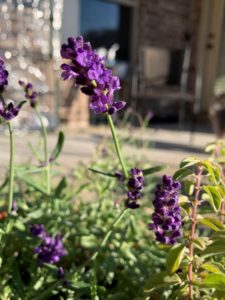
Companion Planting Do’s and Don’ts
Lavender makes a great companion for many plants including roses, Echinacea, sage, thyme, oregano, rosemary, and ornamental grasses. If planted in a container near cabbage, broccoli, and Brussels sprout, it will deter insects like the cabbage moth.
Do not plant dill near lavender as it can affect the latter’s growth. Although lavender is from the mint family, do not grow it in the ground next to mint as their soil and moisture needs are very different.
Harvesting Lavender
One of the benefits of growing lavender is that the flowers maintain their fragrance when dried. You can harvest the flowers at any time, but the optimum time developmentally is when the flowers first begin to open. Cut the flowers in the morning when the flowers’ oils are most concentrated.
To dry lavender, cut a handful of flowers, bind the stems with a string, and hang upside down in a warm location that has good air circulation for two to four weeks. Or, for a much faster method, use a dehydrator on the lowest setting.
Pest and Diseases
Thankfully, this beautiful herb is relatively disease-free. But there are a few threats that you should keep an eye out for. Root rot results from plants that have received too much water. The roots sit in moisture and rot, killing the plant. Fungal leaf diseases like powdery mildew can also be problematic. Again, this is a result of too much moisture or humidity. To remedy these issues, make sure there is adequate air circulation around the plant and that the soil drains well. Also, be careful not to overwater. Container-grown lavender typically does not have drainage issues, except when it comes to overwatering.
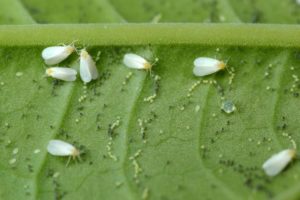
Pests that may plague lavender include, aphids, whiteflies, and spittlebugs. Insecticidal soaps usually work well in these situations. To make your own organic spray, add one teaspoon of Castile soap like Dr. Bonner’s or Dr. Wood’s, to a one quart spray bottle filled with water. Or for larger applications, add four teaspoons to one gallon of water in a pump sprayer. Mix well. Do a test spray on one leaf and wait 24-48 hours to see if there are any adverse reactions. If so, dilute the spray and retest. Then spray the plant thoroughly, especially the underside of leaves. Repeat weekly until there are no more signs of pest. Do not spray during the day as the combination of soap and sunlight could burn your plants. Keep in mind that insecticidal soap can also be harmful to beneficial insects.
If you live in Europe, North Africa, the Near East or the Middle East, you may encounter the rosemary beetle, a rather small (8 mm or 1/3 inch), metallic green and purple striped beetle that feeds on the flowers of aromatic plants like rosemary, lavender, sage, and thyme. Eggs are usually laid on the underside of leaves. The best way to deal with these bright insects is to remove them by hand and place them in a container of soapy water.
Varieties
There are many varieties of lavender. Here are a few:
English Lavender is available in several cultivars, including Hidcote, which has silver-gray foliage and deep purple flowers, and Munstead, which has green foliage and blue-purple flowers. It is one of the most popular lavenders to grow. Jean Davis produces pale pink flowers that are said to taste sweeter than other lavenders. All three cultivars are compact, measuring a height of 18 inches (46 cm), which means they work well in containers.
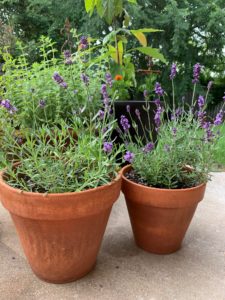
Lavandin is a hybrid of English and Portuguese lavender. It is a larger plant that blooms only once a year. Two popular cultivars are Phenomenal, which is heat and humidity tolerant, and is resistant to root and leaf diseases. Because it is a larger plant it has longer stems than the smaller varieties. Provence grows to a height of three feet. Its flowers have long stems, and its strong fragrance makes it a favorite for drying. It can withstand hot, humid summers.
French Lavender is a compact, bushy plant. It produces dark purple flowers that are said to last the longest of all the lavenders. It grows to two to three feet (.61 to .91 meters) both tall and wide, and it does not tolerate extreme temperatures well.
Lavender is a fragrant and beneficial plant that is perfect for any sized garden. In raised beds or containers, its usefulness is surpassed only by its beauty.
Thank you for reading this article! If you found it helpful, please consider sharing it with others on social media!
